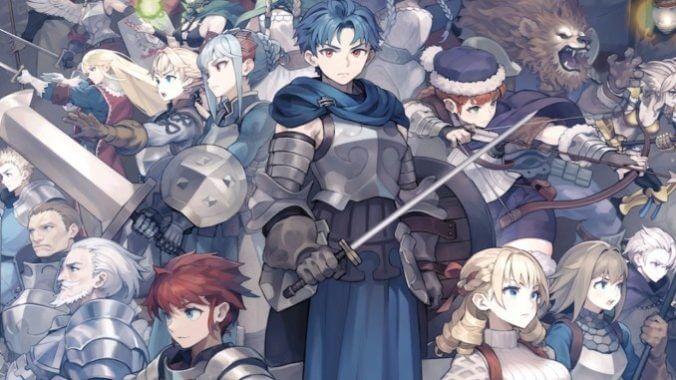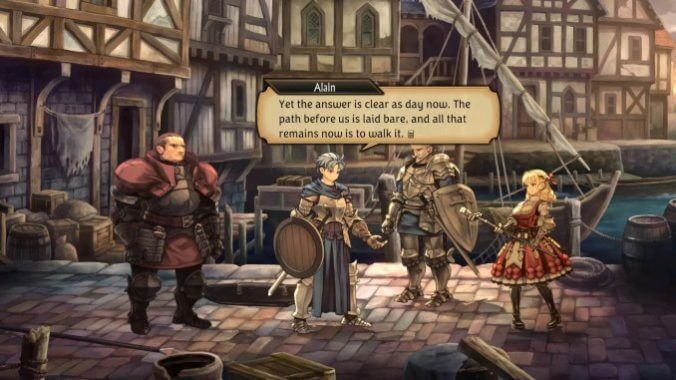Unicorn Overlord Is Playing 4D Chess with a Hundred Pieces

Fans anticipating the release of Unicorn Overlord are waiting for a phantom. Vanillaware’s new strategy game has name checked titles like Ogre Battle, Fire Emblem, and Advance Wars, and their own catalog most recently includes 13 Sentinels, a recombinant sci-fi visual novel / tower defense game whose reputation for twists precedes it. Unicorn Overlord’s name is as mysterious as it is ridiculous: whose unicorn? Overlord what? It’s hard to tell at first glance if this game is going to be a sendup of established tropes, or Dragon Quest-y comfort food nestled within them. It could be anything. As it turns out, it’s trying to be everything.
Having spent more than a week with Unicorn Overlord, I was surprised to find that the maximalism its opening hours express is—mostly—carried through to the end. It hews very closely to tropes in its narrative and structure, yet manages to innovate on class types and move functions to create gameplay with almost unlimited variety. This commitment to sheer scale is ambitious, curated over the 10 years it’s taken for the game to go from concept to release. Yet the more impressive thing to me is that despite the size of the project, some aspects of which could have used even more time, the whole package still manages to feel complete.
In Unicorn Overlord you play as Alain, the prince of a nation called Cornia. When Cornia is betrayed by Galerius, nee Valmore, your mother the Queen sends you into exile, where you grow up and become a young adult ready to reclaim your kingdom from evil. On the way your goal is to liberate four other surrounding kingdoms town by town, using your ever-growing army.
Entering combat in Unicorn Overlord is done by placing units on a square grid and sending them to fight enemy units in battles that play out automatically. Think Final Fantasy 12: each class has a series of abilities that cost ability points, and you can command units to use skills in certain situations. Once you get into battle, your units move according to those predetermined instructions, telling you before you start exactly how much HP you and the enemy will lose. The game is played entirely in preparation mode; though you can still make small changes up until you start the battle, you’re locked into your team once a fight is selected. While the exact projections might seem boring, it’s essential because each team can have up to six characters on both sides, and all the information about their health, critical chance, and status effects would bury you otherwise.

Preparation is important when it comes to individual characters, as well. Each character in your army is a representative of one class, and every class has fixed stat growths. That means that leveling up has nothing to do with RNG. Every class has been designed around a fixed growth pattern, and thus, every class is strong in certain situations. I gravitated towards thieves and flying classes, while I never figured out how to use Hoplites and other classes with hammers. But if I had invested more time into them, I’m sure I would have found situations where they were useful. Classes can also be built out extremely flexibly. One guard-focused character who I built into a dodge tank with the help of some equipment got me out of a rough spot and carried me through the mid-game. This stays true when you play the classes “as intended,” too. Thieves can stand in the front row and not die. Archers can do magic damage. Each class has been interpreted creatively, and mixing and matching them to create the ideal squad can be a lot of fun.
All of the classes have a design for the named character as well as a generic, who you can hire as a mercenary at a fort. The characters all have the Vanillaware style, and despite some… choices with respect to the female character design, blessedly this title mostly avoids the voyeurism of 13 Sentinels. The backgrounds are absolutely beautiful, as are the in-battle cutaways, which act out the cut-and-dry action commands thrillingly. My favorite art in the game was actually the character portraits that accompany text; these are crisp and full of detail. Overall this is a beautiful game, and it runs well on Switch, although the battle animations and weather effects look a little muddy in docked mode.
Though I enjoyed watching battles play out, I started skipping them before long, because otherwise I’d have been here all year. You can beeline your way to the endgame in about five hours, a la Breath of the Wild, but any non-speedrunner won’t stand a chance. Instead you have around 50 hours of liberating and questing ahead of you if you want to beat the ultimate bad guy, and more than that if you take your time. Although I didn’t have that luxury, I did find myself wanting to clear as many maps as possible just so I could explore them. Each battle takes place directly on the world map, with units stationed in towns and forts. When you beat the map you can walk around on it and collect materials, visit towns, and converse with the townspeople you saved. It’s a really intricate design that still feels cool tens of hours in. There’s a small progression loop built in too, where you can collect materials a town needs to build it up and earn renown and money, and then station one of your units there to collect materials for you. It’s a little utilitarian, but I didn’t get tired of running around and making deliveries to my subjects.
-

-

-

-

-

-

-

-

-

-

-

-

-

-

-

-

-

-

-

-

-

-

-

-

-

-

-

-

-

-

-

-

-

-

-

-

-

-

-

-










































